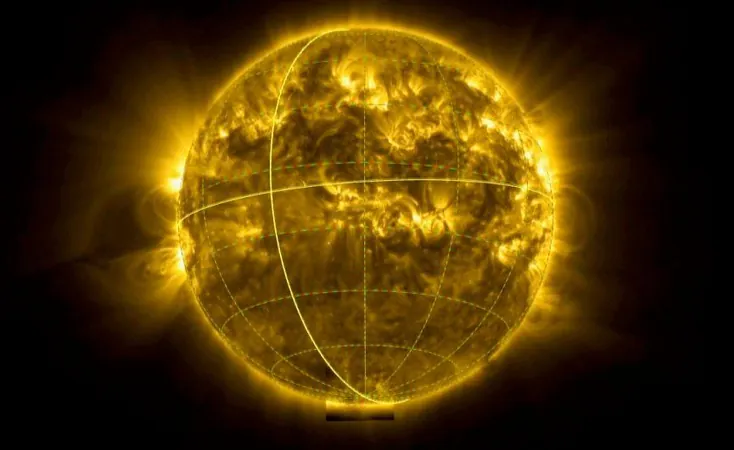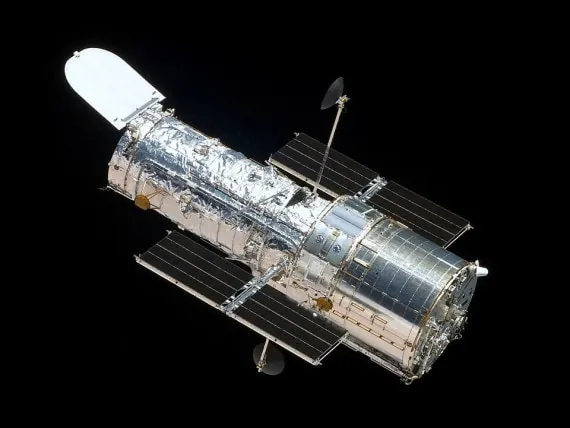
Groundbreaking Views: Spacecraft Unveils First Look at the Sun's South Pole
2025-06-11
Author: Noah
In an unprecedented achievement, the European Space Agency's Solar Orbiter has beamed back the first-ever video and images of the Sun's south pole, unlocking secrets that could transform our understanding of solar behavior.
These astonishing visuals not only showcase the Sun's shimmering atmosphere but also reveal parts reaching a towering million degrees Celsius. Darker gas clouds, still scorching at a hundred thousand degrees, punctuate the scene, providing a stunning contrast.
Professor Carole Mundell, ESA's Director of Science, emphasized the importance of these findings, stating, "Today, we reveal humankind's first-ever views of the Sun's pole. The Sun is our nearest star, a vital force that regulates life on Earth and presents potential risks to our technological systems. Understanding its behavior is essential for predicting solar activity that can disrupt satellite communications and power grids."
While the Sun appears as a bright, featureless disc from Earth, scientists use specialized filters to observe its true dynamic nature. They witness a swirling ball of fluids, with magnetic fields twisting and spewing flares and gas loops into space.
These magnetic fields are instrumental in determining the Sun's volatile cycles. It experiences calm phases characterized by ordered magnetic fields, but these fields can become chaotic, flipping approximately every 11 years and resulting in powerful solar eruptions that can strike Earth.
Such solar storms can wreak havoc on communications devices and power infrastructure, although they also create breathtaking auroras in our skies.
Professor Lucie Green from UCL highlighted a breakthrough in solar research, stating that the Solar Orbiter has provided vital data about the migration of polar magnetic fields, which has long been a science enigma. "We now have the missing piece of the puzzle," she remarked.
The ultimate aim? Crafting accurate computer models to predict space weather, which would empower satellite operations and power utilities to brace for intense solar storms. "This is the Holy Grail of solar physics," asserts Professor Christopher Owen, specializing in solar wind studies.
With the Solar Orbiter capturing intricate images of chemical elements like hydrogen, carbon, oxygen, neon, and magnesium at various layers of the Sun, researchers can track how these elements move and contribute to solar outbursts.
For the first time, the SPICE instrument has allowed scientists to measure the velocities of clumps of solar material, shedding light on the complex dynamics of solar wind ejections.
These groundbreaking revelations equip scientists with invaluable insights into the Sun's magnetism and activity, paving the way for more effective predictions and enhancing our preparedness for the solar storms that affect our daily lives.









 Brasil (PT)
Brasil (PT)
 Canada (EN)
Canada (EN)
 Chile (ES)
Chile (ES)
 Česko (CS)
Česko (CS)
 대한민국 (KO)
대한민국 (KO)
 España (ES)
España (ES)
 France (FR)
France (FR)
 Hong Kong (EN)
Hong Kong (EN)
 Italia (IT)
Italia (IT)
 日本 (JA)
日本 (JA)
 Magyarország (HU)
Magyarország (HU)
 Norge (NO)
Norge (NO)
 Polska (PL)
Polska (PL)
 Schweiz (DE)
Schweiz (DE)
 Singapore (EN)
Singapore (EN)
 Sverige (SV)
Sverige (SV)
 Suomi (FI)
Suomi (FI)
 Türkiye (TR)
Türkiye (TR)
 الإمارات العربية المتحدة (AR)
الإمارات العربية المتحدة (AR)